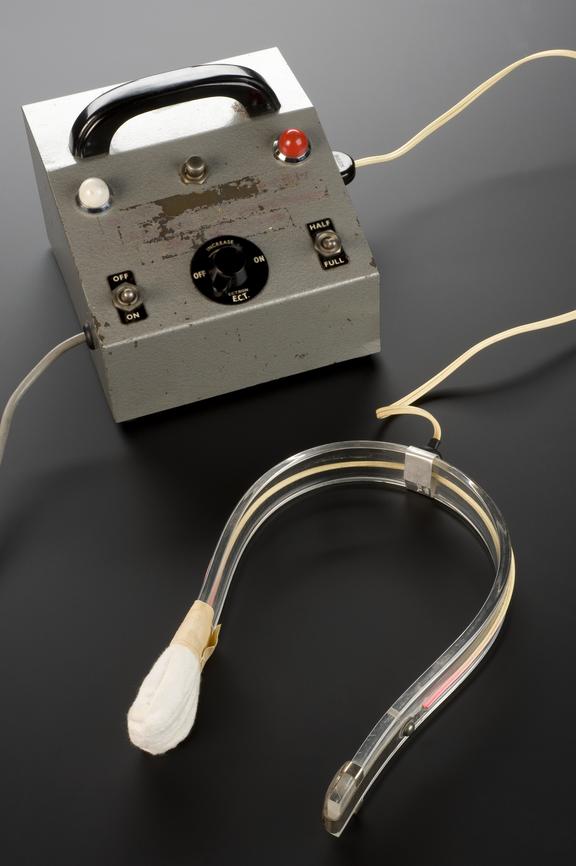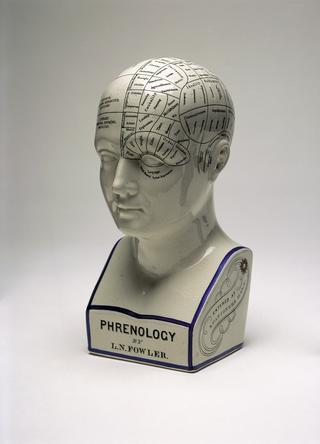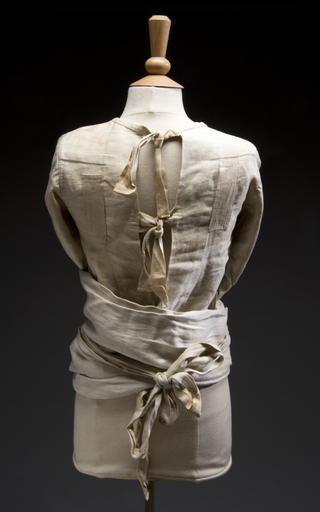

"Ectonus" electroconvulsive therapy (ECT) machine delivering full and half shocks, with unilateral headset (only one electrode covered by gauze), by Ectron Ltd., Baldock, Hertfordshire, c. 1955. Has lead without plug. Manufacturer's label on bottom calls it an 'Electro-Convulsive Apparatus', serial no. 313, and warns, 'Rotary control MUST be in OFF position at commencement of each treatment.'
Electroconvulsive therapy (ECT) was developed in Italy in 1938. ECT machines applied electric currents to the brain in timed pulses. This caused a convulsion or seizure. It was thought possible to 'shock' a patient out of a severe mental disorder.
Early ECT machines were based on technologies used to stun animals. They were crude and difficult to control. There were significant advances in electronics during the Second World War. Machines such as this became commercially available after the war. This ECT machine was made by specialist company Ectron. It was designed to be easier to use and adjustable. The machine administered ‘half’ and ‘full’ power shocks via the scalp electrodes. It was produced in 1954, the same year as the first psychoactive drugs became available. Electroconvulsive therapy was and still is controversial. Psychoactive drugs became a competing and eventually dominant therapy in psychiatric care.
Details
- Category:
- Psychology, Psychiatry & Anthropometry
- Object Number:
- 1980-1388
- Measurements:
-
overall: 145 mm x 175 mm x 180 mm, 3.97 kg
overall (headset): 250 mm x 154 mm x 35 mm, 0.21 kg
- credit:
- Ectron Limited




